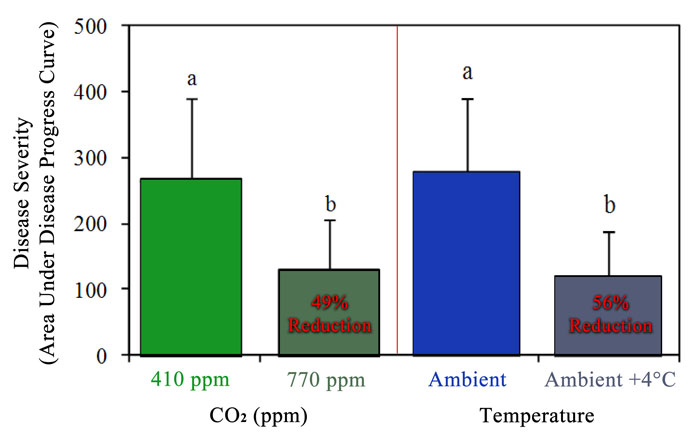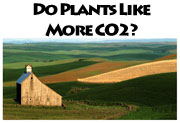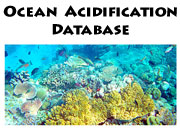| Tweet | Follow @co2science |
Paper Reviewed
Souza Araújo, A., Angelotti, F. and Ribeiro Junior, P.M. 2019. Severity of melon powdery mildew as a function of increasing temperature and carbon dioxide concentration. Revista Brasileira de Coemcoas Agrárias 14: e6916, 2019, doi: 10.5039/agrarian.v14i4a6916.
Writing as background for their work, Souza Araújo et al. (2019) say that powdery mildew, commonly caused by the fungus Podosphaera xanthiii, is one of the main diseases impacting the melon crop in Brazil. Each year it is responsible for causing great economic damage via production losses. Given projections of possible future changes in temperature and CO2, Souza Araújo et al. set out to investigate how those changes might impact the severity of powdery mildew disease on eight melon cultivars commonly grown in Brazil.
To accomplish this objective, the three Brazilian researchers grew the cultivars (Araguaia, Awton, Eldorado, Gladial, Gold, Hibix, Juazeiro, Natal and Sancho) in environment-controlled growth chambers under ambient (410 ppm) or elevated CO2 and ambient or elevated (ambient +4°C) temperatures. The melon seedlings were inoculated with powdery mildew in a full-factorial design with the temperature and CO2 treatments and the severity of the disease was examined nine days after inoculation.
And what did the experiment reveal?
As shown in Figure 1, with the data pooled for all cultivars both elevated CO2 alone and elevated temperature alone reduced disease severity. Specifically, relative to ambient conditions, disease severity was reduced by 49% under elevated CO2 and by 56% under elevated temperature.
Figure 2 displays the results of each melon cultivar under the various treatment conditions, where it is seen that the effects of elevated CO2 and elevated temperature, in combination, were additive; disease severity declined in the eight cultivars from 62% to 89% compared to ambient CO2 and ambient temperature conditions.
Clearly, therefore, in light of the findings presented above, a warmer environment that is enriched with atmospheric CO2 will be a healthier environment for melon production. And that is great news for farmers who are losing large quantities of this favored crop to powdery mildew disease across Brazil and elsewhere!

Figure 1. Severity of powdery mildew in melon seedlings (pooled for 8 different cultivars) at different CO2 concentrations (left panel) and temperatures (right panel). The red text indicates the reduction in disease severity relative to ambient conditions at elevated CO2 and elevated temperature conditions. Adapted from Souza Araújo et al. (2019).

Figure 2. Interactive effects of temperature and CO2 on powdery mildew disease severity of eight melon cultivars. Data plotted on this figure were derived from Table 2 of Souza Araújo et al. (2019).




